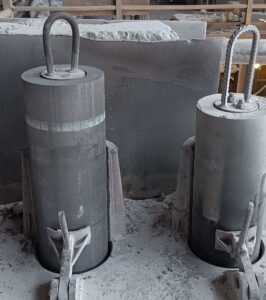Ensuring the integrity of electrodes is paramount in the steelmaking process, as any breakage or loosening can disrupt operations and compromise product quality. To maintain a smooth and efficient steelmaking operation, it is essential to implement measures that prevent electrode breakage and detachment. In this article, we will explore ten key strategies to avoid electrode breakage and loosening during the steelmaking process.
The following measures can be taken during the steelmaking process to effectively avoid electrode breakage and detachment:
(1) The electrode phase sequence is correct, in a counterclockwise direction.
(2) The distribution of scrap steel in the steel furnace is uniform, and large pieces of scrap steel should be placed at the bottom of the furnace as much as possible.
(3) Avoid the presence of non-conductive materials in scrap steel.
(4) The electrode column should be aligned with the top hole of the furnace, and the electrode column should be parallel. The wall of the top hole should be cleaned regularly to avoid the accumulation of residual steel slag and forcing the electrode to break.
(5) Keep the tilting system of the electric furnace in good condition and keep the tilting of the electric furnace stable. (6) The electrode clamp should avoid being clamped at the electrode connection and electrode nipple hole.
(7) Select graphite electrode nipple with high strength and machining accuracy.
(8) The torque applied during electrode connection should be appropriate.
(9) Before and during electrode connection, prevent mechanical damage to the electrode hole threads and nipple threads.
(10) Prevent the insertion of steel slag or foreign objects on the electrode holes and nipples from affecting the rotary joint.
Preventing electrode breakage and loosening is essential for smooth steelmaking operations. By following these strategies, steelmakers can enhance safety, equipment integrity, and overall production efficiency. Prioritizing these measures ensures a seamless steelmaking process and optimal outcomes.






